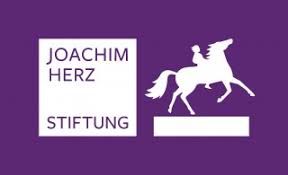Mosquito-specific viruses
In addition to arboviruses that infect and replicate in both arthropods and vertebrates, there is a class of arthropod-specific viruses that replicate only in arthropods. In recent years, the list of these ‘mosquito specific viruses’ (MSVs) has been growing, encompassing viruses from different families (Flaviviridae, Bunyaviridae, Togaviridae) as well as some that are unclassified. Studies show that many mosquitoes are naturally infected with at least one MSV, but it is not known if some MSVs are an ancestral form of arboviruses. Moreover, recent evidence suggests that co- or sequential- infections of MSVs and arboviruses in mosquitoes can change the infection outcome of arboviruses and the vector competence of mosquitoes, possibly through their interaction with the mosquito innate immune response. Knowledge regarding the interaction of MSVs with the mosquito host, for example the innate immune response, the transmission of these viruses as well as the mechanisms of the reported interference on arboviruses is lacking.

Results
Active viral replication induces the antiviral RNAi response in mosquitoes; represented by the production of virus-specific small RNAs. These virus-specific small RNA, normally derive from the whole genome and antigenome; due to this characteristic, we were able to set up a novel small RNA sequencing analysis platform which was successfully applied for the identification of MSVs in mosquito-derived cells; showing the presence of at least one ISV in nearly all known mosquito cell cultures as well as cross-contamination in laboratory mosquito cell cultures (Franzke et al., JGV 2018). This is important, regarding new findings that ISV infections can affect arbovirus infections in mosquitoes and derived cells. Using this RNAi based platform, a novel iflavirus was identified in different Ae. vexans from Barkédji, but not from a variety of countries in Europe; highlighting important differences in the distribution of some ISVs across the world (Parry et al. 2020).
Moreover, comparison of the antiviral RNAi response between an arbovirus and a mosquito-specific viruses, belonging to the same virus family, highlighted common and conserved responses and proteins as well as some interesting differences (Altinli et al. 2021).
First studies on the infection and dissemination of the recently discovered and described Agua Salud alphavirus (ASALV) in the important mosquito vector Aedes aegypti through different infection routes (per oral infection, intrathoracic injection) and its transmission, showed that ASALV infects the female Ae. aegypti and replicates when mosquitoes are infected intrathoracically or orally. ASALV disseminated to different tissues, including the midgut, salivary glands and ovaries. However, we observed a higher virus load in the brain than in the salivary glands and carcasses, suggesting a tropism towards brain tissues. Our results showed that ASALV is transmitted horizontally during adult and larval stages, although we did not observe vertical transmission (Jagtap et al. 2023).
Interaction of MSVs with the mosquito host (i.e. innate immune response, transmission); DZIF
A collection of MSVs is used to perform infection experiments in mosquitoes and to determine their ability as vector control measures. This includes the general ability to infect different mosquito species, effects on mosquito fitness, fertility and survival as well as the interaction with the mosquito immune response. Different infection routes are tested, including micro-injection, feeding and larvae exposure.
Interaction of MSVs with arboviruses and the molecular mechanism of MSV-based interference (DZIF, Klaus Tschira Boost grant, Culifo2 and 3)
In the last decade, many MSVs have also been discovered and, similarly to Wolbachia, MSVs are potential arbovirus control tools due to their ability to interfere with the replication of some arboviruses and inability to replicate in vertebrate cells. Indeed, several studies recently showed MSVs from different virus families closely related to arboviruses (e.g. Togaviridae, Flaviviridae) can decrease arbovirus titre, dissemination and transmission. However, other findings report no effect of MSVs on arboviruses or even a positive effect. Sometimes these opposite effects are even reported for the same MSV-arbovirus combination, but from different groups. As the mechanisms of MSVs’ arbovirus interference is not known it is difficult to understand these contrary findings or even predict interferences of MSVs and arboviruses. In this context, the aim of the projects are to investigate the effect of different MSVs (belonging to a variety of different virus families) on various arboviruses in mosquito-derived cells and mosquitoes, as well as to determine the mechanisms of MSVs arbovirus interference.













